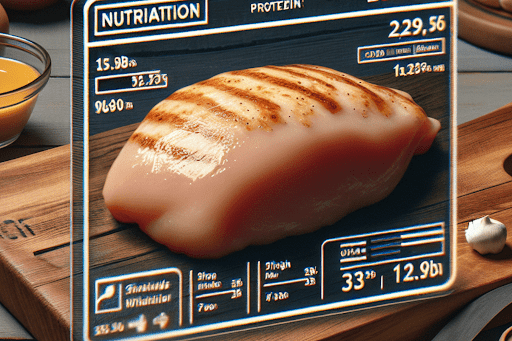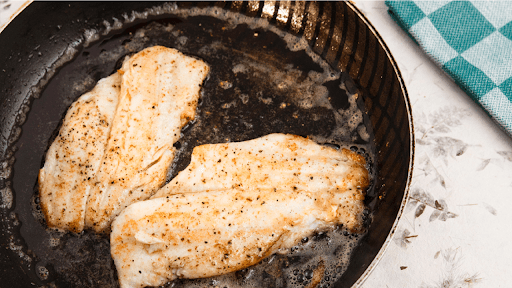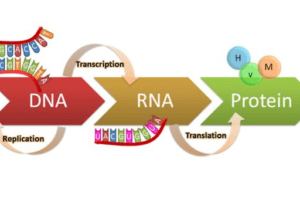The amount of protein in a pound of chicken can vary depending on a few factors:
- The cut: Chicken breasts are generally leaner with more protein than thighs or wings.

- The skin: Skin adds fat, so boneless, skinless chicken has higher protein content.
- Cooking: Cooking doesn’t significantly change the protein amount, but it does affect the overall weight.
A good rule of thumb is that a pound of boneless, skinless chicken breast is a solid source of protein. However, for the most accurate information, check the nutrition label on your chicken package. It will give you the exact breakdown of protein, calories, and other nutrients.
Chicken Breast: A Protein-Packed Choice
Its lean nature and high protein content make it a favorite among those seeking to build muscle, lose weight, or simply maintain a healthy diet.
Protein Content in Chicken Breast
While the exact amount can vary slightly based on factors like the chicken’s breed and diet, generally:
A pound of raw, boneless, skinless chicken breast contains approximately 102 grams of protein.
It’s important to note that cooking chicken breast can reduce its overall weight due to moisture loss, but the protein content remains largely unchanged.
Why Choose Chicken Breast?
- Lean protein: Low in fat and calories, making it a good choice for weight management.
- Complete protein: Provides all essential amino acids necessary for building and repairing tissues.
- Versatile: Can be prepared in numerous ways, from grilling and baking to stir-fries and salads.
While chicken breast is an excellent protein source, it’s recommended to include a variety of protein-rich foods in your diet for optimal nutrition.
Protein per pound of chicken thigh
While chicken breasts often steal the spotlight for their lean protein content, chicken thighs shouldn’t be overlooked.
Protein in Chicken Thighs
Compared to chicken breasts, chicken thighs have a slightly higher fat content, which contributes to their juicier and more tender texture. However, they still provide a substantial amount of protein.
Boneless, skinless chicken thighs: Typically contain around 89 grams of protein per pound when cooked.
It’s important to note that the protein content can vary slightly based on factors like the chicken’s breed, diet, and cooking method.
Benefits of Chicken Thighs
- Flavorful: Chicken thighs tend to have more flavor compared to chicken breasts.
- Moist and tender: The higher fat content contributes to a juicier texture.
- Good source of protein: While not as lean as chicken breast, thighs still provide a significant amount of protein.
However, like all meats, it’s important to consume them in moderation as part of a balanced diet.
How much protein in a pound of boneless skinless chicken breast?
Boneless, skinless chicken breast is a fantastic source of protein. It’s a popular choice among people looking to build muscle, lose weight, or simply maintain a healthy diet.

If you’re curious about the exact amount of protein in a pound of this lean meat, you’ll be happy to know it’s quite substantial. On average, a pound of raw, boneless, skinless chicken breast contains approximately 102 grams of protein. That’s a significant amount to help support your body’s needs.
It’s important to remember that while cooking chicken breast reduces its overall weight due to moisture loss, the protein content remains largely unchanged. So, whether you prefer it grilled, baked, or stir-fried, you’re still getting a good dose of protein.
What is the protein content of a pound of cooked chicken breast?
You might be wondering if cooking your chicken breast affects its protein content. The good news is, cooking doesn’t significantly change the amount of protein in chicken.
While the weight of the chicken will decrease due to water loss during cooking, the protein itself remains largely intact. So, whether you grill, bake, or boil your chicken breast, you’re still getting a good dose of protein.
How does protein content vary between different chicken cuts?
Chicken is a versatile protein source that offers a variety of options. The protein content can vary significantly depending on which part of the chicken you choose.
Chicken Breast
This is often considered the leanest cut and is packed with protein. It’s a popular choice for people watching their weight or aiming to build muscle.
Chicken Thighs
While not as lean as the breast, chicken thighs still offer a good amount of protein. They tend to be juicier and more flavorful due to a slightly higher fat content.
Chicken Wings and Drumsticks
These parts have lower protein content compared to breasts and thighs, but they can still be enjoyed as part of a balanced diet.
The skin on chicken adds fat, so removing it can help increase the overall protein content in your meal.
Does cooking chicken affect its protein content?
A common question among health-conscious individuals is whether cooking alters the nutritional value of their food, particularly when it comes to protein. In the case of chicken, you can rest assured that the cooking process doesn’t significantly impact its protein content.
While it’s true that chicken loses some weight during cooking due to moisture evaporation, the protein molecules themselves remain largely unaffected. Whether you prefer your chicken grilled, baked, boiled, or stir-fried, the amount of protein you consume will be very similar to that of the raw chicken.
So, you can enjoy your cooked chicken without worrying about sacrificing its protein content. The focus should be on choosing lean cuts, such as chicken breast, and preparing it in ways that maintain its flavor and tenderness.
How Much Protein Do You Need?
Determining your exact protein needs is like finding the perfect pair of jeans – it depends on your unique body and lifestyle.
A general guideline is to consume about 0.8 grams of protein per kilogram of body weight each day. For example, a person who weighs 70 kilograms (about 154 pounds) would need around 56 grams of protein daily.
Several factors influence your protein requirements:
- Activity level: People who exercise regularly, especially those building muscle, need more protein.

- Age: As we get older, our bodies tend to lose muscle mass, so protein needs might increase.
- Overall health: Certain medical conditions can impact protein requirements.
While it’s essential for building and repairing tissues, you also need carbohydrates and healthy fats for overall well-being.
If you have specific dietary goals or concerns, consulting with a registered dietitian or healthcare professional is always a good idea.
How does chicken protein compare to other protein sources?
Chicken is a great source of high-quality protein, meaning it contains all the essential amino acids your body needs. It’s also relatively low in fat, making it a popular choice for many people.
Other animal-based proteins, like beef, pork, and fish, also offer high-quality protein but can vary in fat content. Red meats, for example, tend to be higher in saturated fat compared to chicken.
Plant-based proteins like beans, lentils, tofu, and tempeh are excellent alternatives. While they don’t contain all essential amino acids in a single source, combining different plant proteins throughout the day can provide the complete amino acid profile.
Ultimately, the best protein source for you depends on your personal preferences, dietary needs, and overall health goals. A variety of protein sources is generally recommended for optimal nutrition.

How can I incorporate more chicken into my diet?
Breakfast of Champions
- Chicken and vegetable omelets: A hearty and protein-packed start to your day.
- Chicken sausage: A tasty alternative to traditional pork or beef sausage.
Lunchtime Delight
- Chicken salads: Experiment with different herbs, spices, and add-ins for endless flavor combinations.
- Chicken wraps: A quick and easy lunch option that can be customized with your favorite fillings.
- Leftover chicken: Repurpose yesterday’s roasted chicken into a sandwich or salad.
Dinnertime Favorites
- Grilled chicken: A versatile protein that pairs well with salads, vegetables, or grains.
- Chicken stir-fries: A quick and healthy meal packed with flavor and nutrients.
- Chicken curries: Explore different cuisines and spice levels to keep things interesting.
- Chicken soups and stews: Comforting and nourishing, perfect for colder months.
Sneaky Chicken
- Chicken broth: Use as a base for soups, sauces, or rice dishes.
- Ground chicken: A lean alternative to ground beef in tacos, burgers, or meatballs.
- Chicken nuggets (homemade): A healthier option for kids and adults alike.
Remember, the key to enjoying more chicken is to experiment with different flavors and cooking methods. By incorporating it into various meals throughout the day, you can easily increase your protein intake without getting bored.
FAQs About Chicken Protein
Q: How much protein is in a pound of chicken?
A: The protein content in a pound of chicken varies depending on the specific cut and whether the skin is on or off. Generally, boneless, skinless chicken breast is the highest in protein, with around 100-110 grams per pound.
Q: Does cooking chicken affect its protein content?
A: Cooking chicken does not significantly change the amount of protein. While the overall weight of the chicken may decrease due to moisture loss, the protein content remains largely the same.
Q: Which part of the chicken has the most protein?
A: Chicken breast is generally considered the leanest cut with the highest protein content. However, chicken thighs also offer a good amount of protein.
Q: How much protein is in a chicken thigh?
A: A 3-ounce serving of boneless, skinless chicken thigh typically contains around 23-28 grams of protein.
Q: Is chicken a good source of protein?
A: Yes, chicken is an excellent source of high-quality protein.
Q: Can I eat too much chicken?
A: While chicken is a healthy protein source, consuming too much of any single food can lead to nutritional imbalances.
Q: Is chicken breast healthier than chicken thighs?
A: Chicken breast is generally leaner with lower fat content compared to chicken thighs. However, chicken thighs still offer valuable nutrients and can be part of a balanced diet.






